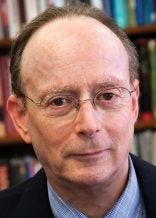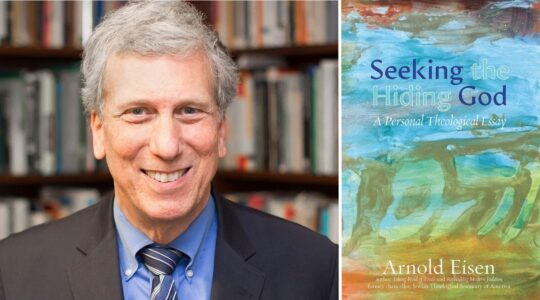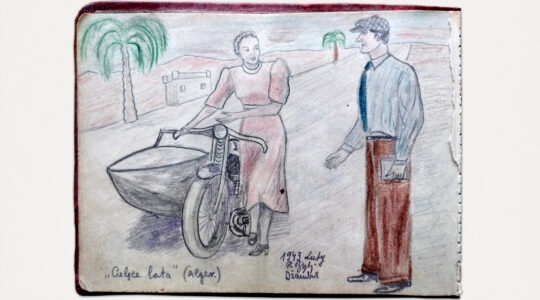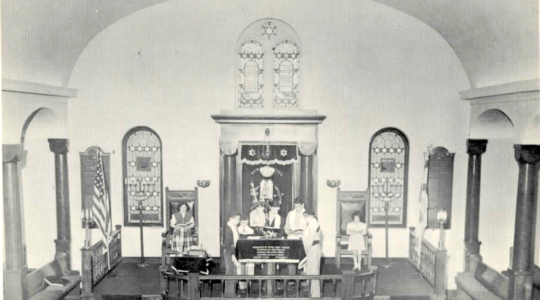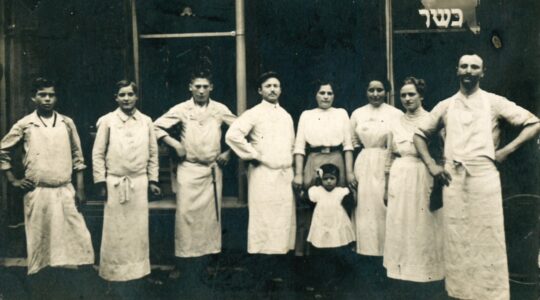Four years ago I wrote with some skepticism about “an audacious plan to repair the world,” as described by its chief creator, the Reut Institute, a Tel Aviv-based think tank.
At a roundtable discussion I attended in April 2012, along with about two dozen Jewish professionals and lay leaders, we were told that the plan called for collaboration between the State of Israel and the Jewish diaspora to come up with a strategy that would dramatically improve the lives of 250 million people in the next decade.
It didn’t turn out quite the way it was imagined. The result is in some ways less grand in scale — the government of Israel is not involved. But in other ways it is even more inspiring. And the goal of helping so many millions of people is still on track, aided earlier this month by a $700,000 Google Impact Challenge grant for making the world more accessible to people with disabilities.
But I am getting ahead of the story.
Back at the roundtable, Gidi Grinstein, the founder of Reut, said that after 18 months of internal analysis of “this 21st-century tikkun olam [repair the world]” project, the organization determined that the best way to approach the challenge was to address a specific global need like water, food, prenatal health or energy security — areas where Israeli innovation excelled. The primary motivation: to fulfill the Jewish value of improving the world by addressing human suffering. In addition, he said, the project would strengthen the Israel-diaspora relationship and enhance Israel’s standing in the international community, positioning the Jewish State as a light unto the nations rather than Goliath to the Palestinians’ David.
The attendees were asked for feedback, and the general consensus was a mix of admiration, encouragement and doubt. They saw the concept as impressive but impractical, and expressed worries about Israeli government bureaucracy and turf battles between and among Israeli state agencies and philanthropists, here and in Israel.
The planners continued to meet and hone their ideas. In 2013, the Reut project managers, now working with the Schusterman Family Foundation and its ROI Community, began to focus on solving neglected social problems where there are few market or government solutions. The idea was further narrowed to create a collaborative competition among talented technology innovators — designers, engineers and project managers — willing to donate their time and skills to develop products for people with disabilities.
They came up with the name TOM (Tikkun Olam Makers). In an interview last week, Grinstein called the competition “a radical new approach to inclusiveness in the 21st century,” a way to address and help solve — quickly and inexpensively — problems that may be encountered by a relatively small number of people. Or even one person.
While there is little or no economic incentive for big companies to address the particular needs of individuals with disabilities, TOM is anchored in the belief that there are thousands of highly trained experts around the world willing to donate their creative energy for the sake of the intellectual challenge and, even more, out of a simple but profound sense of doing good — directly helping another person.
“It’s a way to make sure the benefits of innovation and prosperity … trickle down to the whole society,” Grinstein said, noting that skilled innovators relish the idea of helping people they’ve actually met, not just creating in the abstract.
Support the New York Jewish Week
Our nonprofit newsroom depends on readers like you. Make a donation now to support independent Jewish journalism in New York.
In July 2014, TOM held its first “make-a-thon” in Israel, an intense, 72-hour event where teams of “makers” (the volunteer experts) meet with “users” (people with disabilities) and seek to develop, on the spot, solutions to the users’ individual needs. Employing a combination of what one participant called “advanced technology and chutzpah” often means working through the night to create something that is functional and inexpensive.
It could be a way of allowing a child with cerebral palsy to play a musical instrument; designing a light, folding wheelchair so taxis will be more willing to stop for people who use them; fashioning a prosthetic limb; or coming up with a book page-turner for a paralyzed reader.
Scores of working prototypes have been created since the first make-a-thon. Since then there have been six more, in Israel, Brazil, Canada and the U.S. Many more are planned in countries like Argentina, Australia, Vietnam, Spain, Italy, South Korea and maybe even Dubai over the next several years, and the themes — disabilities, the elderly, children, etc. — will be decided by the specific communities. Volunteers are over-subscribed, even though most teams spend four to six weeks in advance planning for their project. (The 72-hour make-a-thons are considered the equivalent of six months of product development, according to the organizers.)
Most of the “makers” are not Jewish, and some are Arab. TOM leaders note that these events are an ideal platform for coexistence, people working together for a common cause.
‘Give Me Five Minutes’
Sefi Udi, 36, an Israeli electronics engineer and industrial designer, was hit by a car 12 years ago and is now paralyzed from the neck down. That did not stop him from continuing to work, operating a computer stylus in his mouth to design products to help those who cannot use their arms or legs. A member of the TOM team from the beginning, he is both a maker and a user.
“I am fortunate I have the knowledge and the ability to create tools for me, and for other people,” he told me. “Before TOM I didn’t meet others doing this kind of work. Now I meet them in person and through technology.”
Richard Lushai, a design engineer in Calgary, Canada, learned about TOM by chance after watching a video of the first make-a-thon. He was intrigued and decided to lead one of his own, locally. “But I ran into money problems and was about to give up,” he told me, “and finally decided to call the TOM office in Tel Aviv one night at 2 a.m.” He was connected to Arnon Zamir, the TOM director, who told him, “give me five minutes and we’ll put together a team,” Lushai recalled. “Suddenly everything changed.”
He was given the help to hold the make-a-thon with four teams of mostly student designers and engineers — the events usually have about 10 teams.
Among the people they worked with was a 2-year-old girl with Rett Syndrome, a rare genetic neurological illness, who is unable to walk. “She loved going out in the snow, but it was difficult to take her out in a wheelchair,” said Lushai. “We came up with a collapsible sled, and were delighted to see a video of her using it a few weeks later.”
Another team worked on adding sensors to a blind woman’s walking stick, alerting her to obstacles in her way.
Lushai noted that one team was made up of students from Yemen who were at first reluctant to join up, given Israel’s negative image in their country. But he convinced them it was a good cause and they participated.
Support the New York Jewish Week
Our nonprofit newsroom depends on readers like you. Make a donation now to support independent Jewish journalism in New York.
“That created a bridge through TOM,” Lushai observed. “In some ways it’s easier to bring people in under the innovation banner than the political one.”
Though TOM officials play down the Israel component of their work and are apolitical — Sefi Udi says “it’s not about Israel, it’s about the Jewish people” — Lushai noted, “everyone knew the Israel connection — the whole spirit is very Israeli.”
With the new Google grant, TOM is entering a new phase. Sefi Attias, whose title at Reut is “innovation shepherd,” explained that “we are stepping back a bit” and encouraging local communities around the world to produce their own make-a-thons, with guidance, support and best-practice advice from TOM.
Funds from the grant will be used to develop a web platform to display TOM-inspired products and prototypes, help some of the prototypes become polished projects, and promote the project around the world. Google mandates that the funds must be used by the end of 2016, a deadline that, Grinstein says, should “dramatically accelerate the pace of innovation.”
He still believes TOM can improve the lives of a quarter of a billion people in the next decade as communities across the globe launch their own make-a-thons, harnessing the talent and inspiration to transform Tikkun Olam from a cliché into a blessed reality.
For a three-minute video of TOM in action: www.youtube.com/watch?v=B07v98t-lVg
The New York Jewish Week brings you the stories behind the headlines, keeping you connected to Jewish life in New York. Help sustain the reporting you trust by donating today.
